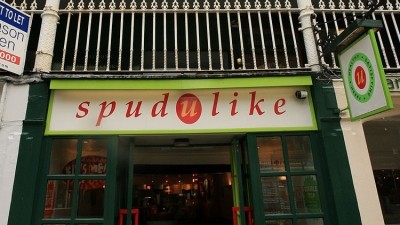Time for a chain reaction?

In 18 months, the restaurant industry has gone from not knowing what a company voluntary agreement (CVA) is, to shrugging off news that yet another national brand is grabbing that lifeline. As of spring 2019, the CVA remains the season’s must-have paperwork – a fashionable firewall to protect still profitable sites from the folly of over-expansion.
So normalised has the CVA become (call KPMG; dignified resignation; rent renegotiations; site closures; new menu; refurb) that, certainly publicly, all parties, from CEOs to creditors, now talk about it with great calmness. A business-like calmness that makes you wonder how much soul-searching is really going on in the branded side of UK hospitality.
True, there is agreement that everyone went a little crazy during that ludicrous land-grab for overpriced property. But otherwise the casual dining crisis is characterised as a natural disaster, a perfect storm of business rate hikes, Brexit uncertainty, higher wage and food costs, which operators could do little to control. This crisis was precipitated by external factors. Fundamentally, the business model is sound.
But is it? Larger, established chains will endure. McDonald’s, Greggs and Wetherspoons have those consumers who shop on price locked in. Nando’s, Wagamama and PizzaExpress command huge customer loyalty and, if not unique, are not directly replicated by serious rivals. All three continue to post resilient-to-brilliant results.
The CVA crew, however (Carluccio’s, Byron, Gourmet Burger Kitchen, Jamie’s Italian, Prezzo), lack both that muscle and that differentiation. Such ‘quality chains’ took their initial impetus (see also Strada, Cau), not from a USP, but by simply offering a more sophisticated version of food already available on the high street, at a price that undercut (or was perceived to), good local independents.
Initially the approval of discerning foodies gave such chains a certain legitimacy but, by 2018, that gloss had worn off. Maintaining that edge is incredibly challenging as chains grow, and in a marketplace where standards are rising rapidly. Consequently, on a deeper existential level, such chains, as a genre, now seem to lack an over-arching rationale – to me, at least. Why do they exist? Who is their audience? Are they future-proofed?
Anecdotally, I talk to many people who, while not foodies, are picky enough that although they use the big chains for convenience, visit independents to trade up. ‘Quality chains’ rarely register in that conversation, and much less so after the PR disaster of the casual dining crunch. Britain is also smaller than ever. New ideas travel fast. London brands can no longer open outside the capital and presume they will fly. Invariably, a much-loved indie has beaten them to it and might already have three sites. Simultaneously, those things which millennials and Gen Z are said to crave (individuality, novel venues, newness) are very difficult for chains to deliver. Offering a consistent product and experience is, arguably, an active handicap in this sphere.
One way in which a quality chain could use its size and efficiencies cleverly is in creating a ‘woke’ brand that speaks to young Britain’s ethical concerns. A fast food chain focused on affordable meat-free products, sustainable suppliers and Living Wage employment, would have purpose. It could capture the media and public imagination in the way that Byron or Jamie’s once did. But that would require a different model where profit and expansion were mediated by a continuing emphasis on a great product and that ethical framework.
Pizza Pilgrims has talked about achieving a ‘roll-out with soul’. It is a difficult task. But one that brands in that quality space must face.
This is a web version of an article that first appeared in the April issue of Restaurant magazine, the leading title for the UK's restaurant industry. For more features, comment, interviews and in-depth analysis of the restaurant sector subscribe to Restaurant magazine here
Follow Tony on Twitter: @naylor_tony















